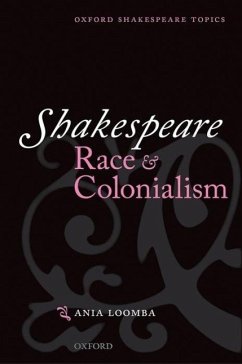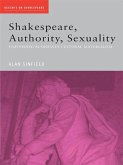For centuries, plays like Othello and The Tempest have spoken about 'race' to audiences whose lives have been, and continue to be, enormously affected by the racial question. But are concepts such as 'race' or 'racism', 'xenophobia', 'ethnicity', or even 'nation' appropriate for analysing communities and identities in early modern Europe? Did skin colour matter to Shakespeare and his contemporaries, or was religious difference more important to them? This book
examines how Shakespeare's plays contribute to, and are themselves crafted from, contemporary ideas about social and cultural difference. It considers how such ideas might have been different from later ideologies of 'race' that emerged during colonialism, but also from older ideas about barbarism, blackness, and
religious difference. Thus it places the racial question in Shakespeare's plays alongside the histories with which they converse.
Shakespeare uses and plays with the vocabularies of difference prevailing in his time, repeatedly turning to religious and cultural cross-overs and conversions - their impossibility, or the traumas they engender, or the social upheavals they can generate. Shakespeare, Race and Colonialism looks in depth at Othello, The Merchant of Venice, Antony and Cleopatra, The Tempest, and Titus Andronicus, and also shows how racial difference shapes
the language and themes of other plays.
examines how Shakespeare's plays contribute to, and are themselves crafted from, contemporary ideas about social and cultural difference. It considers how such ideas might have been different from later ideologies of 'race' that emerged during colonialism, but also from older ideas about barbarism, blackness, and
religious difference. Thus it places the racial question in Shakespeare's plays alongside the histories with which they converse.
Shakespeare uses and plays with the vocabularies of difference prevailing in his time, repeatedly turning to religious and cultural cross-overs and conversions - their impossibility, or the traumas they engender, or the social upheavals they can generate. Shakespeare, Race and Colonialism looks in depth at Othello, The Merchant of Venice, Antony and Cleopatra, The Tempest, and Titus Andronicus, and also shows how racial difference shapes
the language and themes of other plays.








